Is Atlantis a Viable Alternative to HashiCorp Cloud Platform Terraform?
Infrastructure as Code (IaC) has revolutionized the way organizations manage cloud infrastructure, with Terraform leading as a premier tool. HashiCorp Cloud

In the ever-evolving landscape of software development, the need for observability has become paramount. As applications and infrastructure grow more complex, the ability to understand, monitor, and troubleshoot their behavior in real-time is a fundamental requirement. This is where Grafana Cloud and OpenTelemetry, as dynamic tools, enter the scene.
In this blog post, we will explore the powerful synergy between Grafana Cloud and OpenTelemetry. We'll delve into how to send data to Grafana Cloud to use the game-changing potential of OpenTelemetry for monitoring, tracing and logging.
Whether you are an experienced developer looking to improve your observability stack or a newcomer to the world of monitoring, tracing and logging, this blog post is intended to provide you with a starting point and a practical example of using OpenTelemetry data in Grafana Cloud.
Grafana Cloud is a comprehensive observability platform designed to empower organizations to gain deep insights into their applications and infrastructure. Born out of the open-source Grafana project, it extends the capabilities of Grafana to provide a unified, cloud-based solution for monitoring, visualization, and alerting. It offers an forever free plan to getting started on observability.
OpenTelemetry is an open-source project that aims to standardize and simplify the collection of observability data in software applications. It provides a framework and a set of APIs to instrument, collect, and transmit telemetry data, which includes metrics, traces, and logs. OpenTelemetry is a critical component in modern observability and monitoring solutions, allowing developers to gain insights into the behavior and performance of their applications and systems.
In order to see hands on, how we can integrate Grafana Cloud with OpenTelemetry, we can use the already instrumented microservice demo application provided by OpenTelemetry, which will be referred to as OTel-Demo from now on.
Once you have met the prerequisites, we can start by adding the OpenTelemetry Helm repo:
1helm repo add open-telemetry https://open-telemetry.github.io/opentelemetry-helm-charts
Before we can deploy the Helm chart, we need to get a few things, which can be found in the Grafana Cloud Portal (to access the portal you can click on one of the links at the top of the landing page of Grafana Cloud).

The following URLs and Usernames are found in the Details page of the corresponding Integration:
<PROMETHEUS-URL>.<PROMETHEUS-USER-ID> (e.g. 12345).<TEMPO-URL-WITHOUT-HTTPS> by extracting the hostname and port (e.g. tempo-us-central1.grafana.net:443).<TEMPO-USER-ID>.<LOKI-URL> and append /loki/api/v1/push (e.g. https://logs-prod-us-central1.grafana.net/loki/api/v1/push).<LOKI-USER-ID>.<ACCESS-POLICY-TOKEN>.With all the URLs, Usernames and the Token in our possession, we can create a custom values.yaml file for our Helm deployment und replace everything within < > with the correct values.
1default:
2 envOverrides:
3 - name: 'OTEL_COLLECTOR_NAME'
4 value: <KUBERNETES-NODE-NAME> # kubectl get nodes
5
6opentelemetry-collector:
7 mode: daemonset
8 presets:
9 logsCollection:
10 enabled: true
11 includeCollectorLogs: false
12 config:
13 extensions:
14 basicauth/traces:
15 client_auth:
16 username: <TEMPO-USER-ID>
17 password: <ACCESS-POLICY-TOKEN>
18 basicauth/metrics:
19 client_auth:
20 username: <PROMETHEUS-USER-ID>
21 password: <ACCESS-POLICY-TOKEN>
22 basicauth/logs:
23 client_auth:
24 username: <LOKI-USER-ID>
25 password: <ACCESS-POLICY-TOKEN>
26
27 exporters:
28 otlp:
29 endpoint: <TEMPO-URL-WITHOUT-HTTPS>
30 tls:
31 insecure: false
32 auth:
33 authenticator: basicauth/traces
34
35 prometheusremotewrite:
36 endpoint: <PROMETHEUS-URL>
37 auth:
38 authenticator: basicauth/metrics
39
40 loki:
41 endpoint: <LOKI-URL>
42 auth:
43 authenticator: basicauth/logs
44
45 processors:
46 spanmetrics:
47 metrics_exporter: prometheusremotewrite
48
49 service:
50 extensions: [ basicauth/traces, basicauth/metrics, basicauth/logs, health_check , memory_ballast ]
51 pipelines:
52 metrics:
53 exporters: [prometheusremotewrite]
54 logs:
55 receivers: [filelog]
56 exporters: [loki]
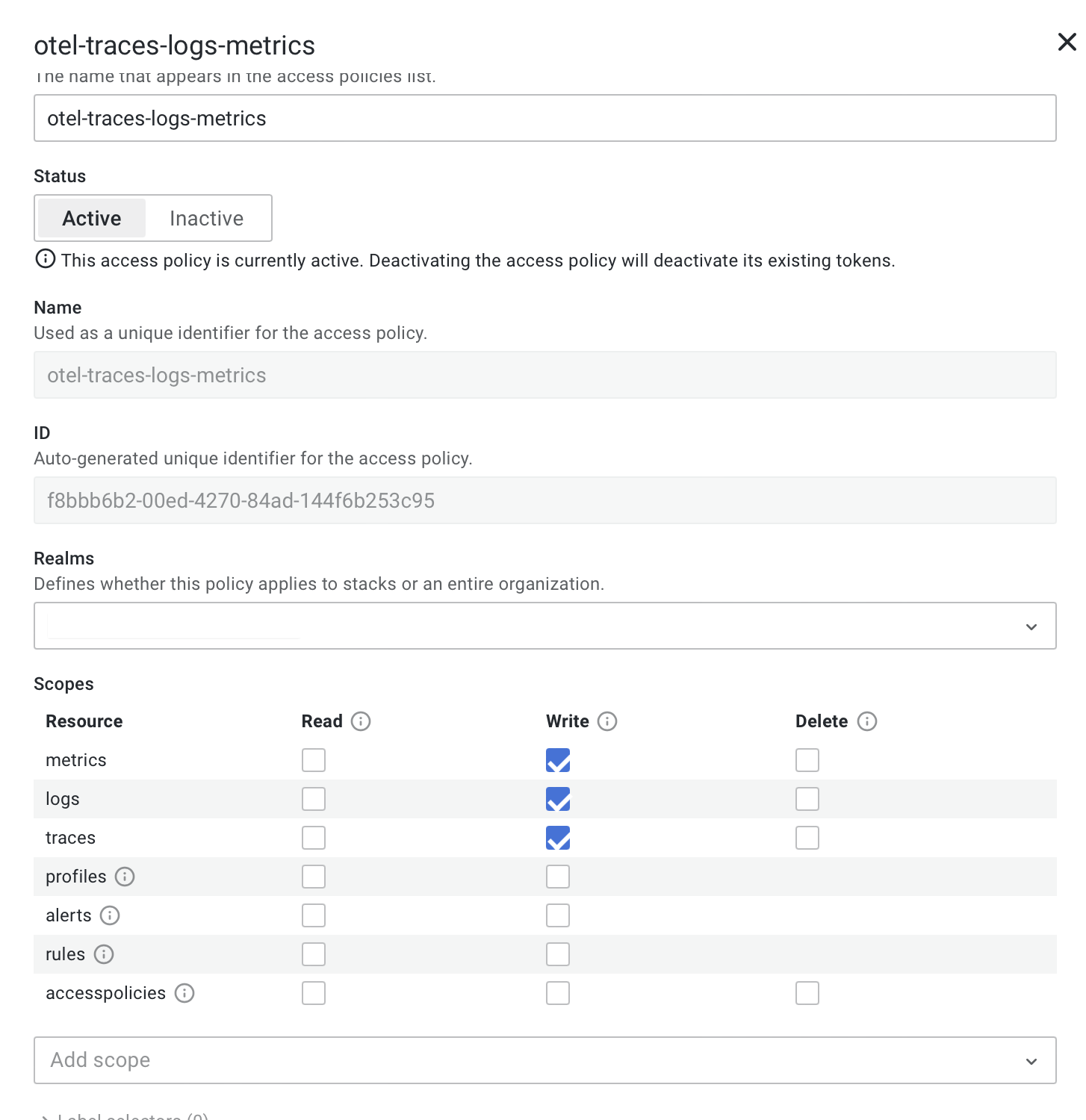
With everything ready, lets deploy our Helm chart:
1helm upgrade --install my-otel-demo open-telemetry/opentelemetry-demo --values values.yaml
Now we will be able to use the Explorer tap in Grafana Cloud to view our logs, traces and metrics, as well as expose the frontend of the demo application, we just deployed:
port-forward:1kubectl port-forward svc/my-otel-demo-frontendproxy 8080:8080
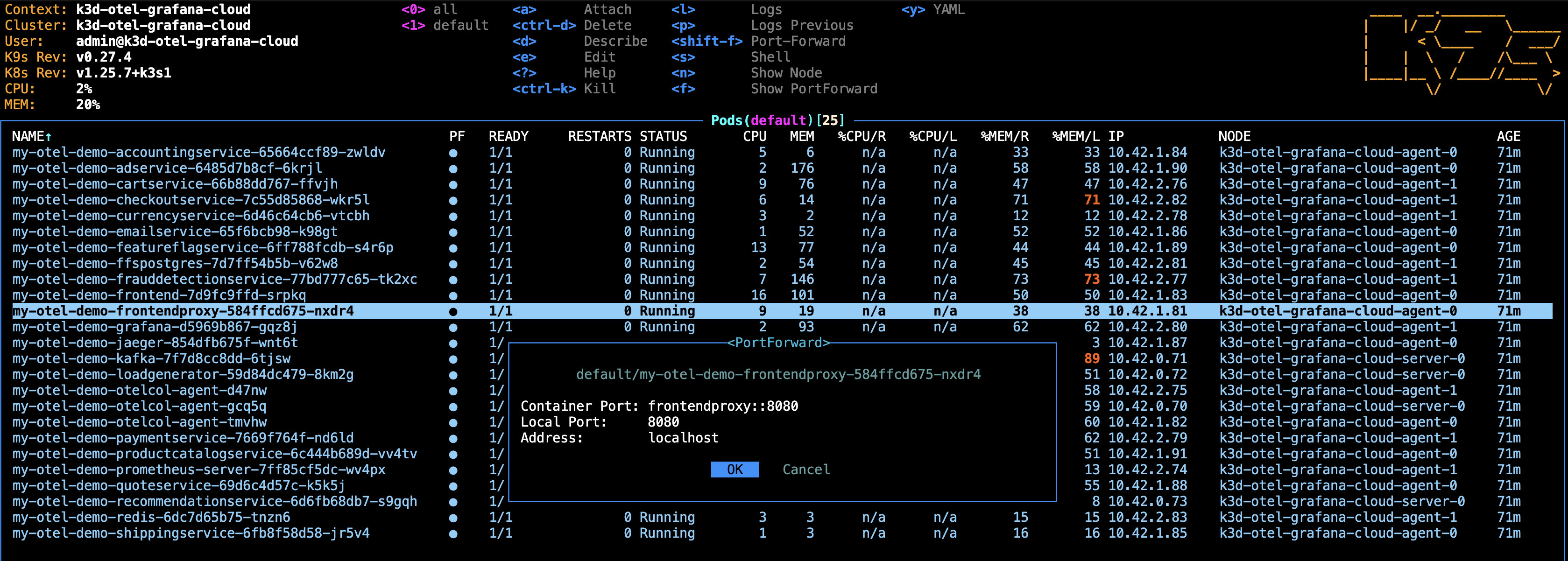
On the Explorer tap switch to the Loki data source and explore the logs:
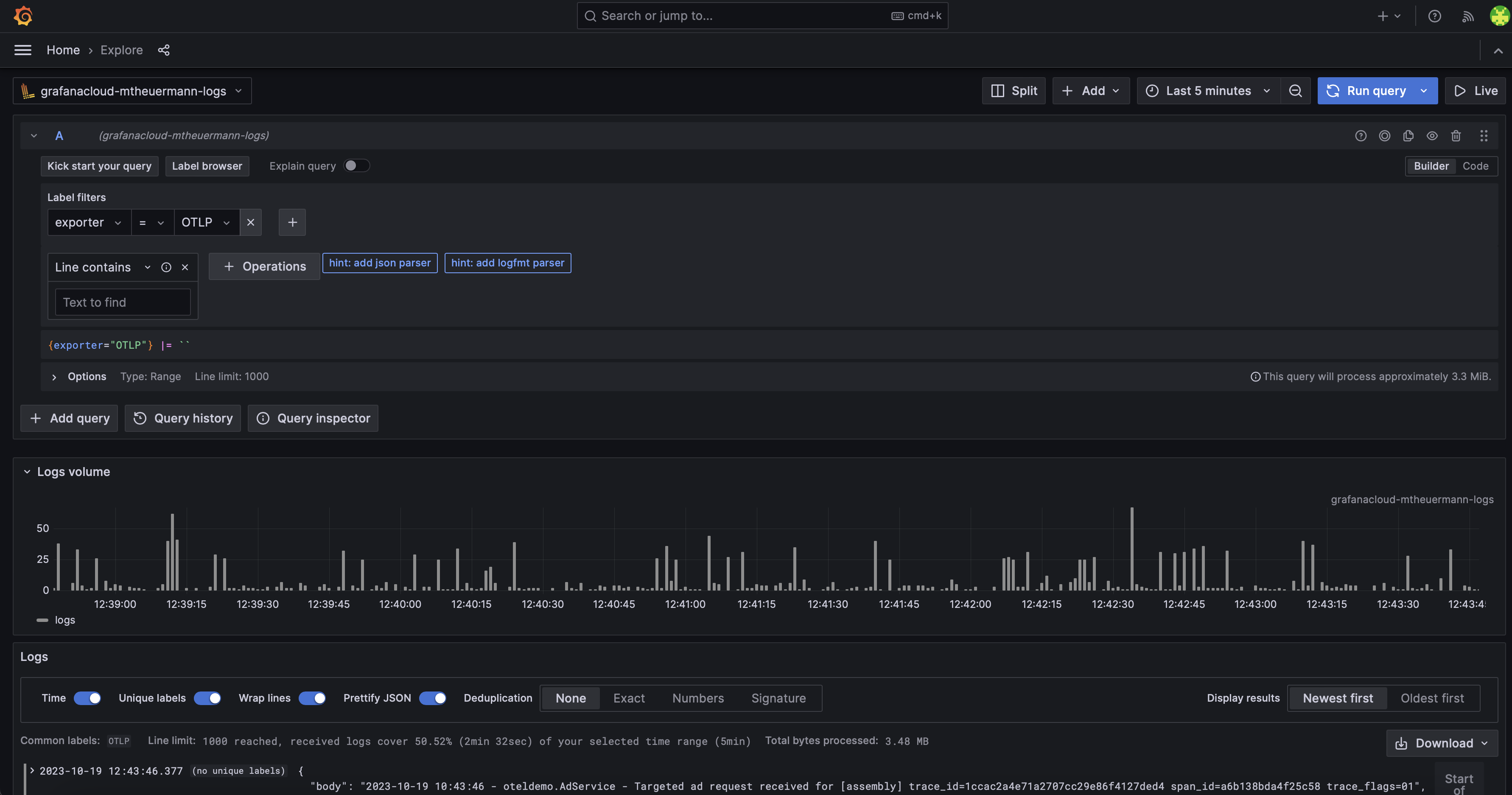
On the Explorer tap switch to the Prometheus data source and explore the metrics:
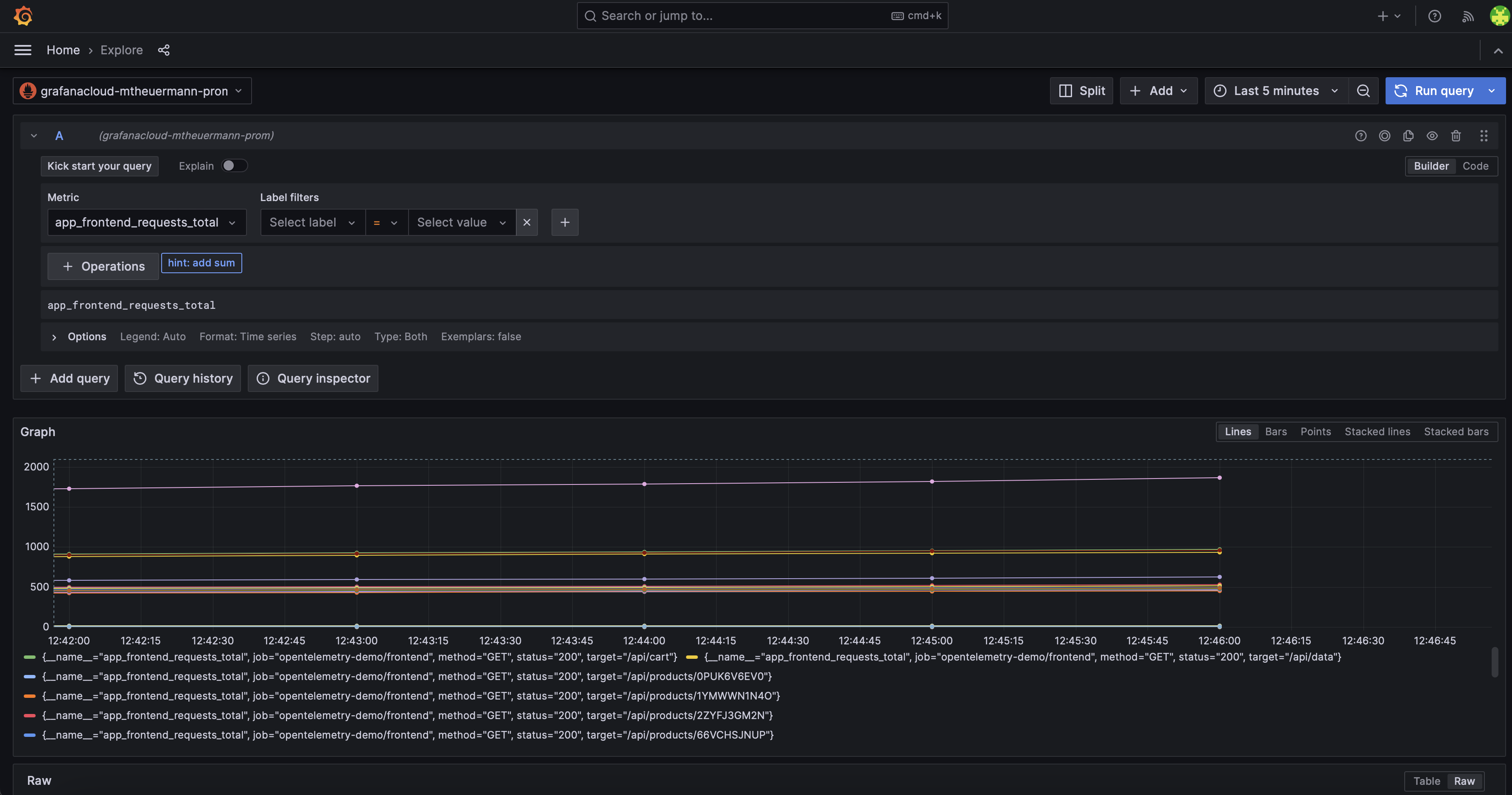
On the Explorer tap switch to the Tempo data source and explore the traces:
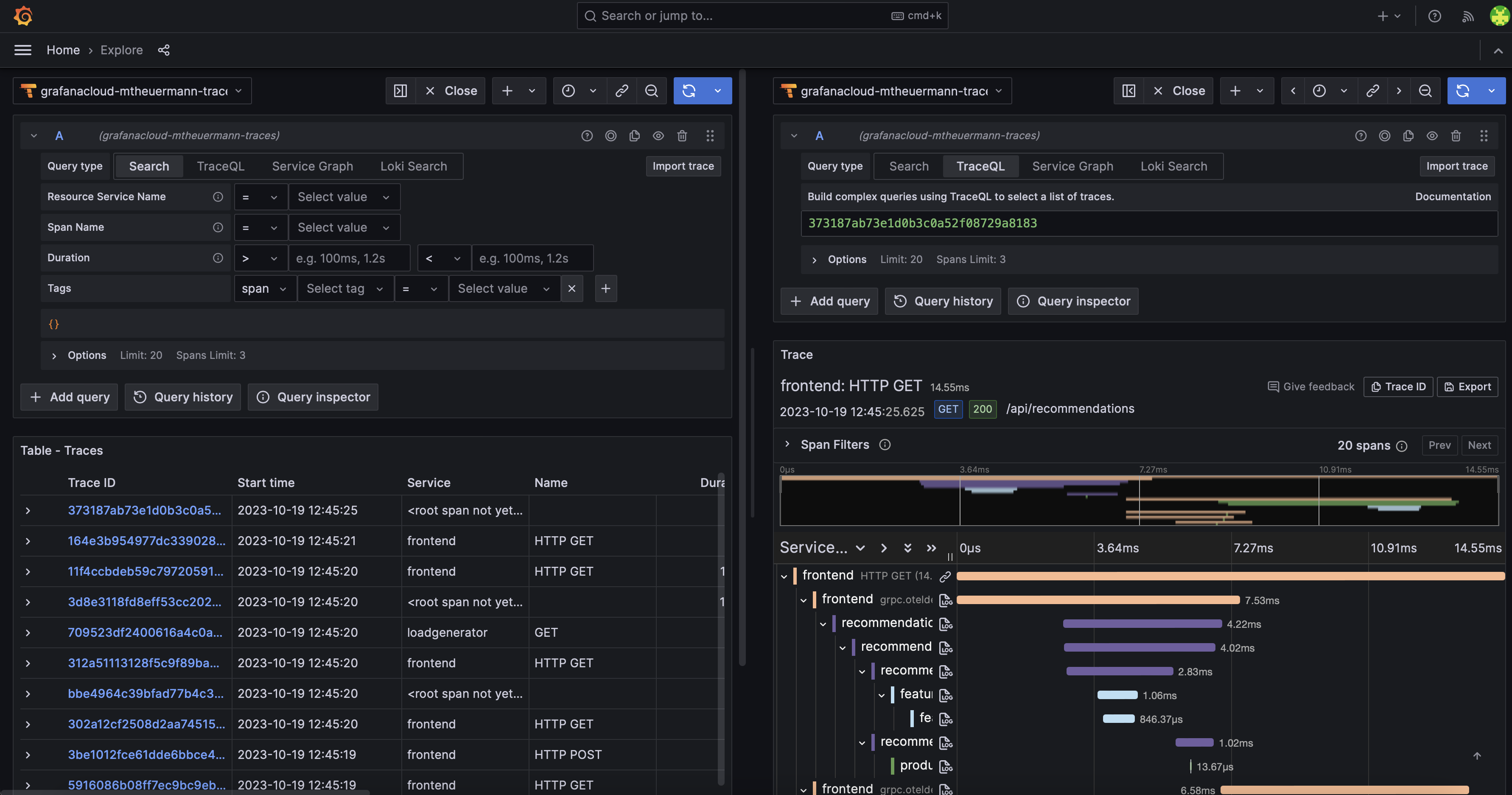
On the right upper corner of Grafana Cloud we can use the “+“ sign to add new dashboards. We can import predefined dashboards like the “HTTP Metrics OpenTelemetry“ dashboard, using the ID: 18860
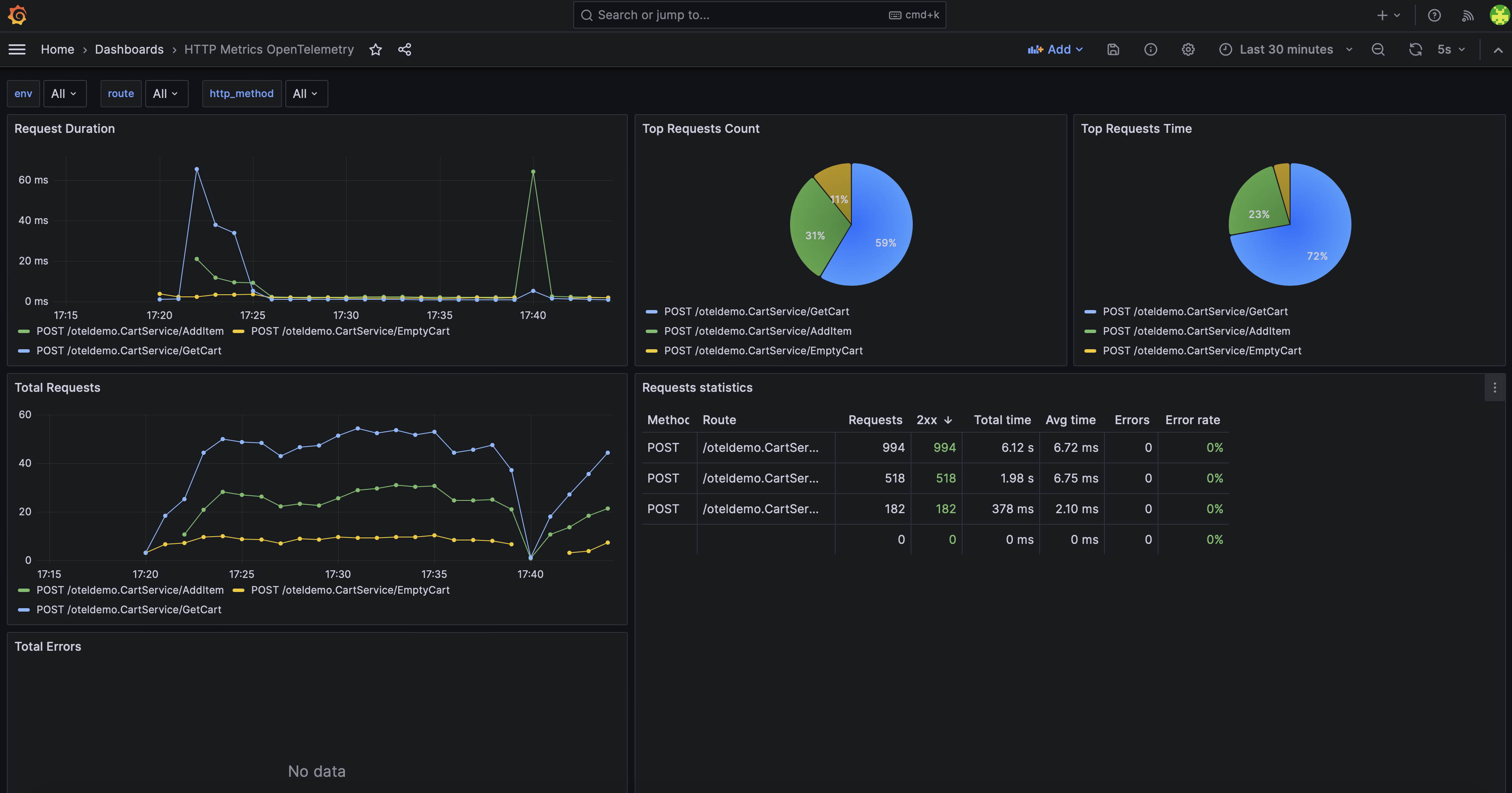
In this blog post, we covered the following topics:
You are interested in our courses or you simply have a question that needs answering? You can contact us at anytime! We will do our best to answer all your questions.
Contact us